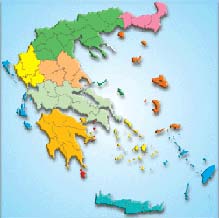
Please click on the map,
the region you want to visit |
|
|
|
|
| |
|
 |
Dominikos Theotokopoulos - El Greco |
|
 |
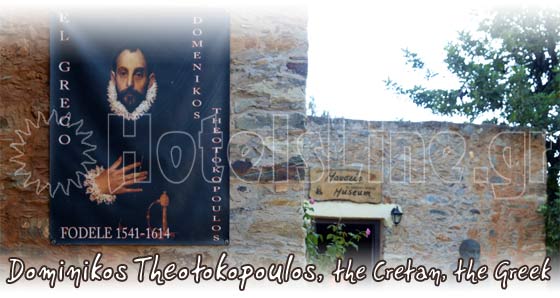
 |
Museum
The building that houses the museum was restored under the supervision of the Ministry of Culture and since August of 1998 it began to operate with an exhibition of copies of works by El Greco.
Tradition says that in this house the great painter El Greco 1541 - 1614 was born. It is said that he was born 25 km northwest of Chandakas (Heraklion), next to a Byzantine church.
This area is called Theotokiana and is one of the first settlements of Fodele.
The restoration began in 1982 and lasted five years.
The house was found with serious damage because of the time and it was rebuilt exactly as the original design was. Inside, there are photos of the coming of the professors of the Valiadolid University of Spain on July 27, 1934, where they wanted to pay a tribute to our great painter El Greco and to his native town of Fodele.
Additionally there are photos and information about the unveiling of El Greco's bust, in Fodele in 1964.
Also, you'll see information about the descendants of El Greco, a simulation of the painting room (atelier) and 24 of his paintings in the form of slides.
After years of research, which took place by Spanish professors and students led by the professor of archeology Mr. Tormos of Valiadolid University who participating in a research program of arts and archaeology and in collaboration with the Spanish Consulate of Greece, they confirm with their research this tradition that states that Fodele is the birthplace of El Greco.
On July 27, 1934, these researchers came to the magical village of Fodele to pay a tribute to the great painter and to the place of his birth.
They brought in their own hands, as a sign of respect and of deep appreciation to the distinguished painter, a build-in bronze plaque on a piece of rock of Toledo with engraved these words:
The HISTORY PART OF
UNIVERSITY OF VALIADOLID
A PULSE OF THE HEART OF
KASTILLIA
OFFERS THIS PLAQUE TO FODELE
WHICH COMES FROM
THE ROCK OF TOLEDO
AS A SOUVENIR OF THE IMMORTAL
GLORY OF
El Greco
JULY 1934 |
|
|
El Greco, the Cretan, the Greek
El Greco, the Cretan, the Greek, the top painter. He is the General and the grandfather of Kazantzakis. And just the name "Greek" that was given to him, is enough to give us a great honour.
The Master hagiographer that since his young age was already famous in Candakas in the second half of the 16th century, he left his homeland, like so many others, for a universal path. But the first element in his art comes from the Byzantine art, as Chandakas was then the world centre of this art.
A restless spirit, as an authentic Cretan, he opened his wings to Venice of Italy, the metropolis of culture, literature and art in Europe. There he met one of the greatest painters of the time, Titsiano, and incorporated in his painting worldview, as the second basic element, the light (the "Lightning") and the colour.
He ended up to Spain, where his life had an enormous climax. Here, he pitted against the Holy Inquisition. The showdown was between good and evil, moral and immoral, freedom and intolerance, faith and fanaticism. It was the eternal struggle between Light and Darkness.
Greco had all of these in his paintings, the Light and the values of the insubordinate civilization which gave birth to him.
According to tradition, when the painter was in Crete and he painted saints, he signed his works with the name Cris.
 His original work "The Baptism" is at the Historical Museum of Crete, after its purchase by the city of Heraklion with the assistance of many residents with a significant amount, allowing to visitors of the museum to admire one of the finest works of the great painter. His original work "The Baptism" is at the Historical Museum of Crete, after its purchase by the city of Heraklion with the assistance of many residents with a significant amount, allowing to visitors of the museum to admire one of the finest works of the great painter.
|
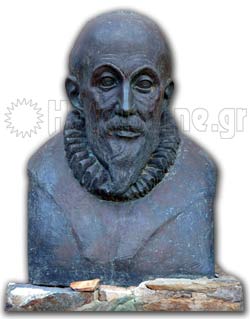
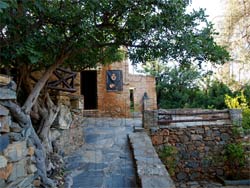
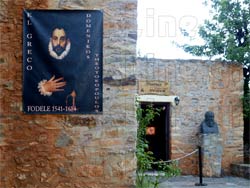
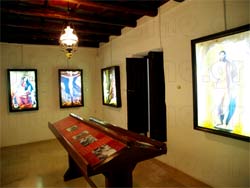
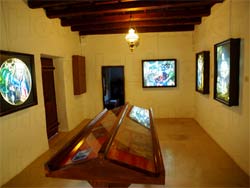
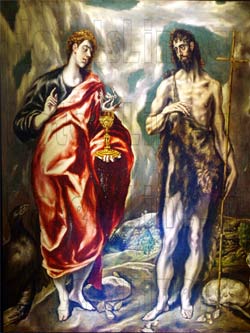
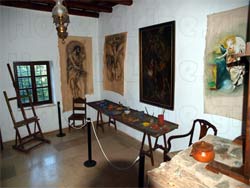 |
"What if he died three hundred and fifty years ago, when the essence of his anguish is the same with ours, when the anger, which destroys and builds is also present today, when its presence is touched by our century"
The above noted the Committee of the celebration in 1964, a year which characterized as "the year of El Greco", in a tribute to the three hundred and fifty years since the death of El Greco.
Within this celebration, the political and the intellectual leadership of the country and the foreign diplomacy, honoured with their presence, in the village square, the unveiling ceremony of the bust of El Greco, which was created and donated by the sculptor I. Apartis to the birthplace of this great painter.
There, beside the old plane, is always the plaque, which was offered in 1934 by the Spanish representatives of the University of Valliadolid, engraved in the form of the painter and the commemorative inscription.
El Greco was born on delivery in Fodele of Heraklion, Crete, in 1541. He comes to Chandakas in order to apprentices beside the Sinai monks. Here, he will find his first expressive forms and at his 25 years,, around 1566, the great painter will seek his fate and the expression of his talent in new horizons.
First stop is Venice, where he remains for four years. Here he will have the opportunity to study close to Titsiano and to work next to major painters of the mature Renaissance like Tintoretto, Veronese, Basano etc. Next stop is Rome, where he arrives in 1570. Here he will deal with the architecture and the sculpture.
In 1577, he will go to Spain, first in Madrid and then to Toledo to paint the iconostasis of Santo Domigo el Antigono. Here he will thrive his talent and he will stop to work only when he dies, in 1614.
In his work, the main means of expression is colours. The painter abandons gradually the warm colours that his colleagues use at this period of time and he uses cold colours in blue-green tonnes with lunar reflections. The cold colours, the hard lighting, the free touch, highlight the deeper content of his work and distinguish it from the creations of the Renaissance and of the manierism..
In general, however, his work falls within the framework of the movement of manierism while with his latter works expresses Expressionist tendencies, for which he is considered as a forerunner to modern movements.
Greco's work refers mainly to religious subjects, but incorporates and a large number of portraits. There were found 115 paintings, 15 sketches and 150 drawings.
The museum is open daily,
from 9 am to 7 pm. |
|

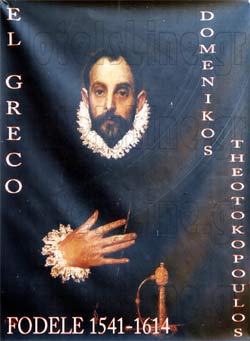
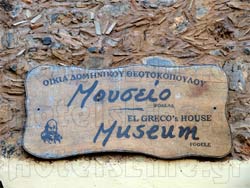
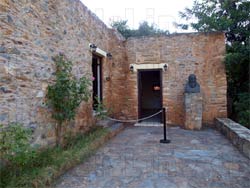
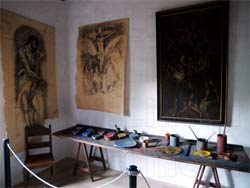 |
 |
Accommodation proposals, entertainment and shopping in Heraklion |
|
|
|
| ADVERTISMENT |
|
|
 Similar pages Similar pages |
|
|
 |
|
|
| |
|
|
|